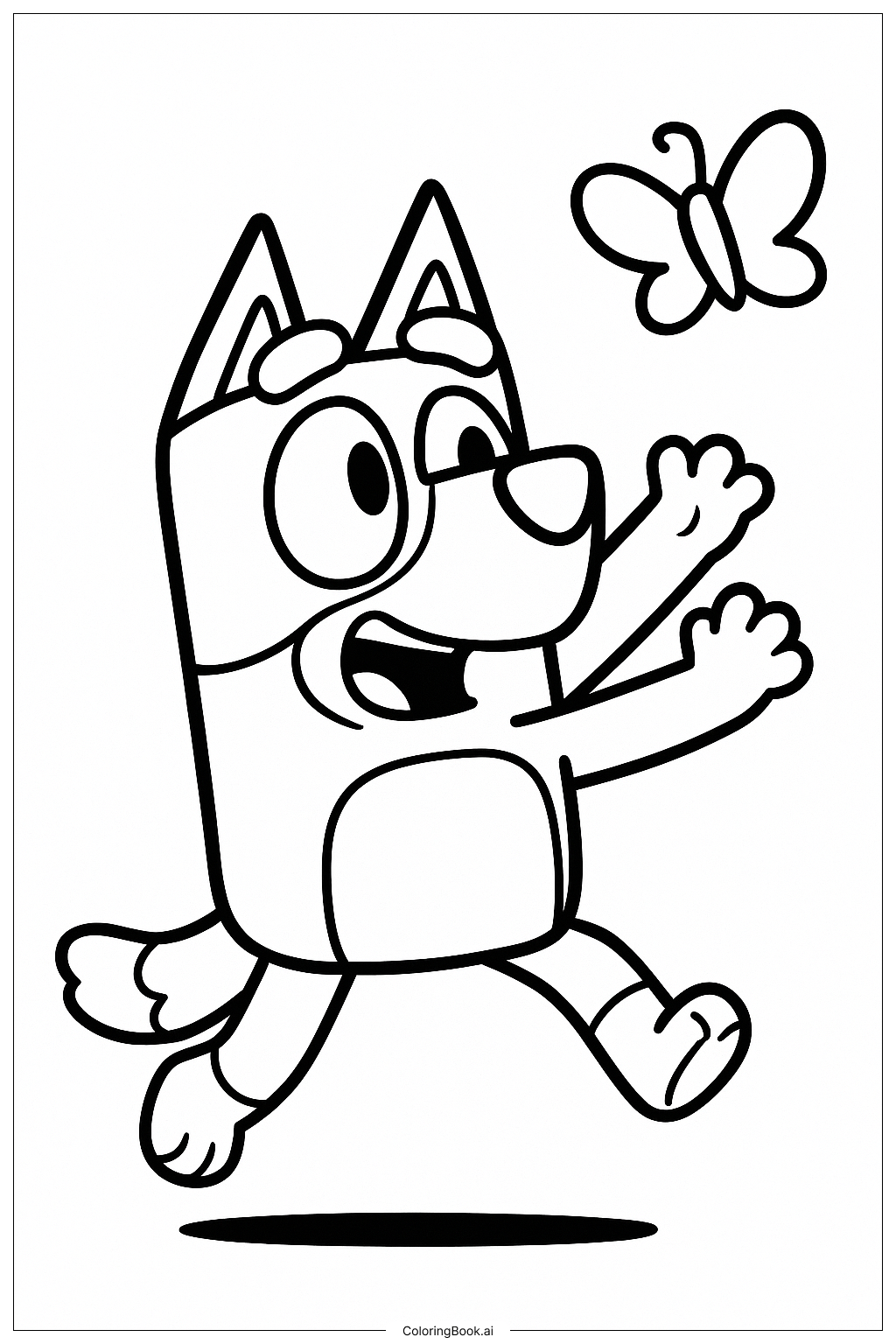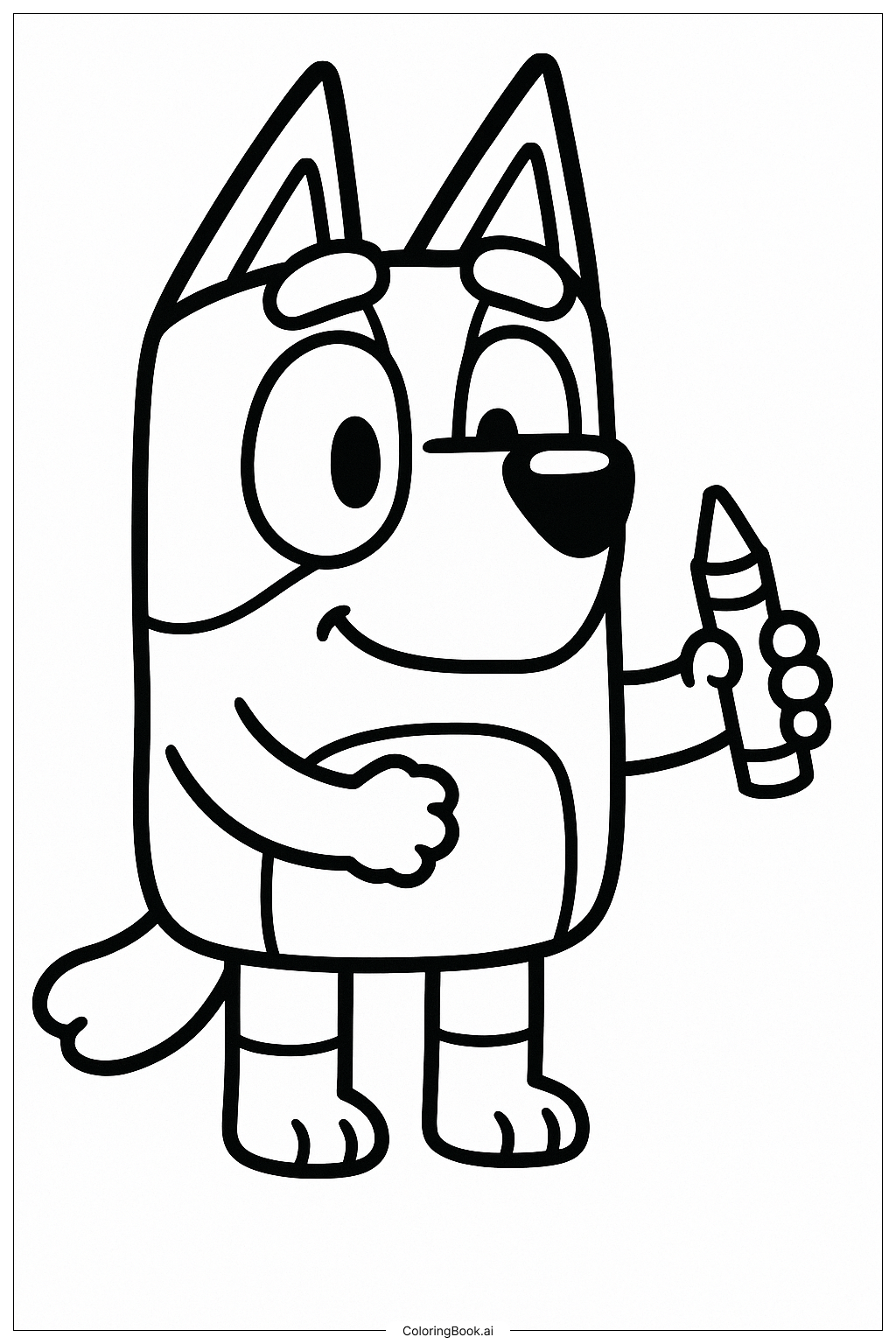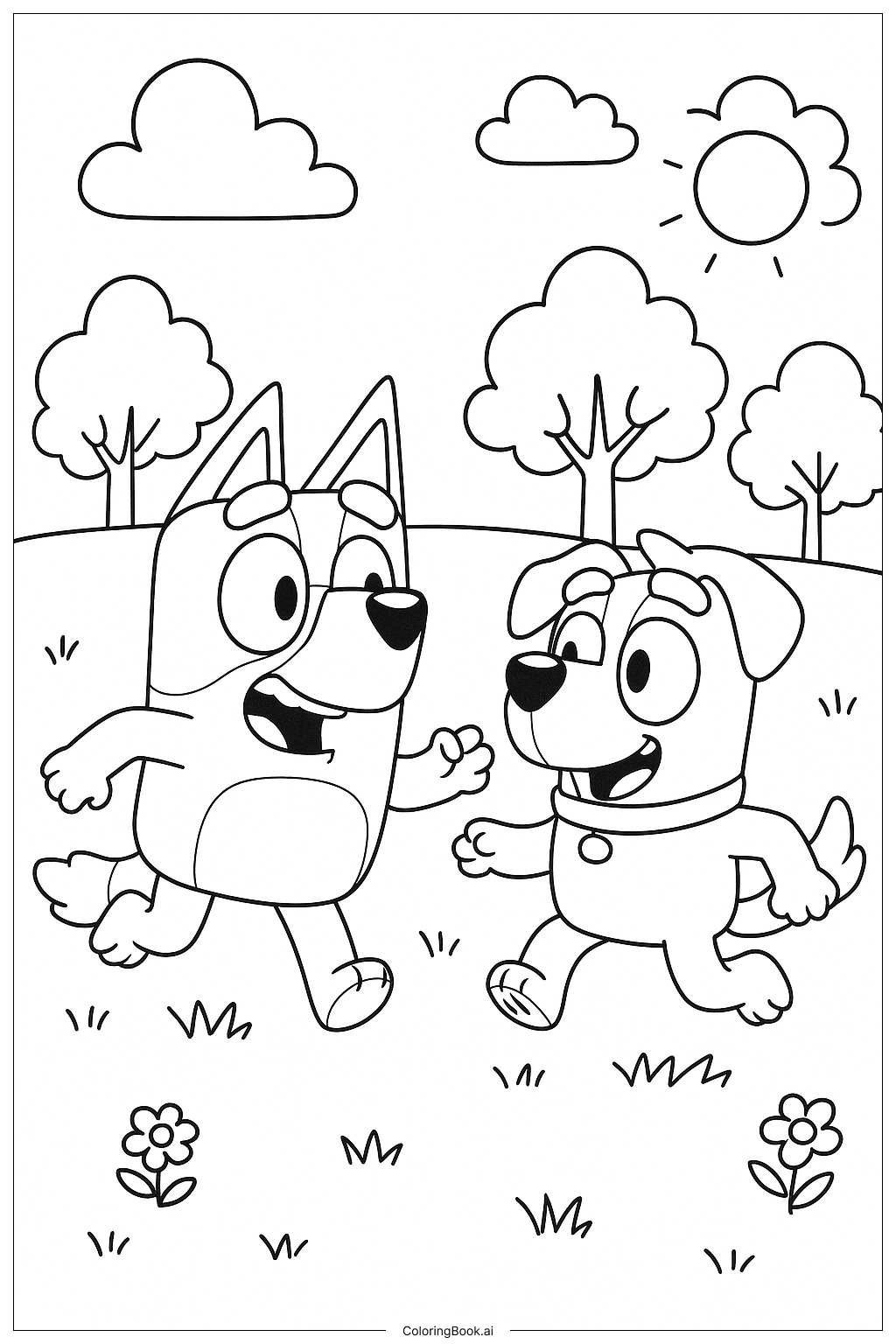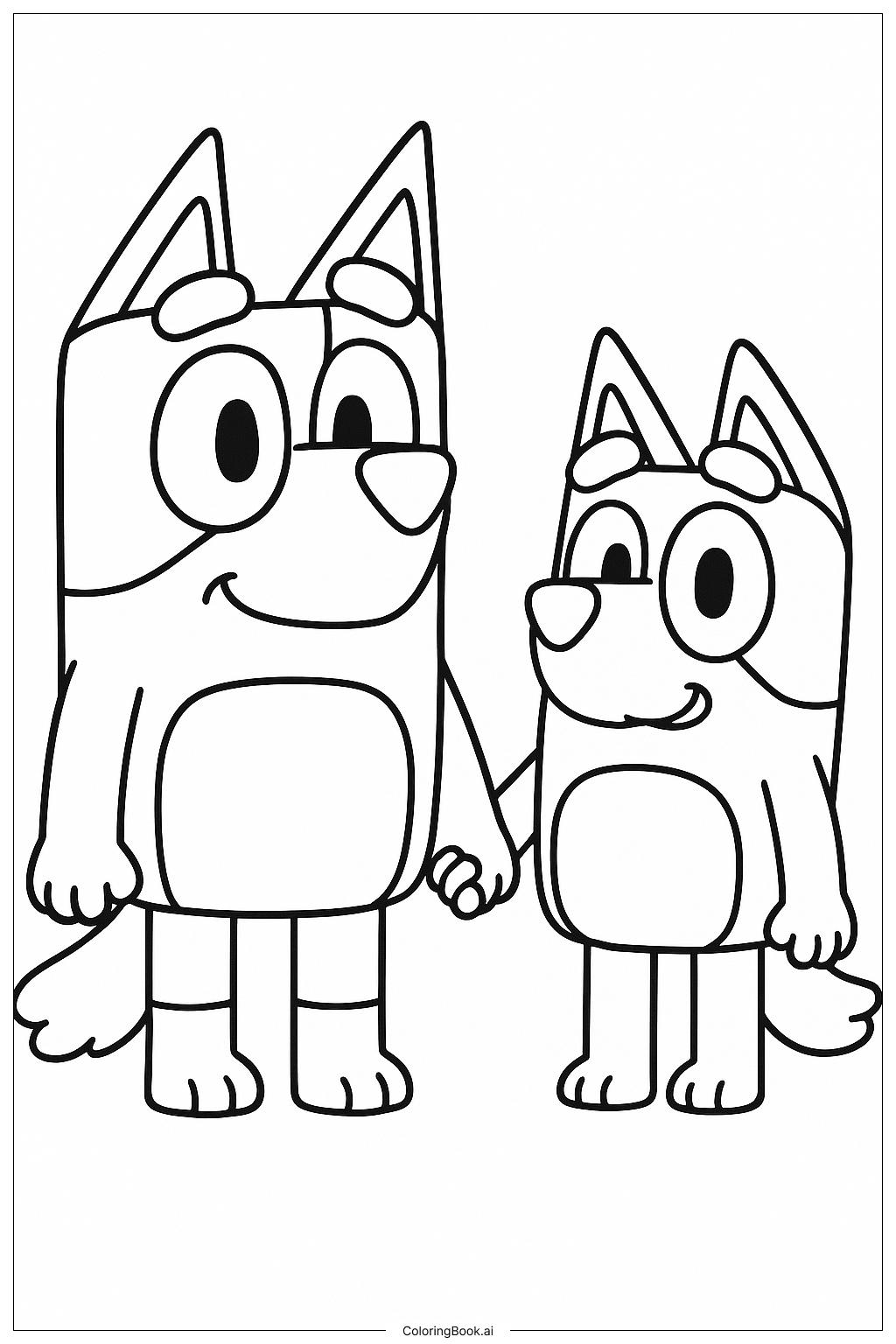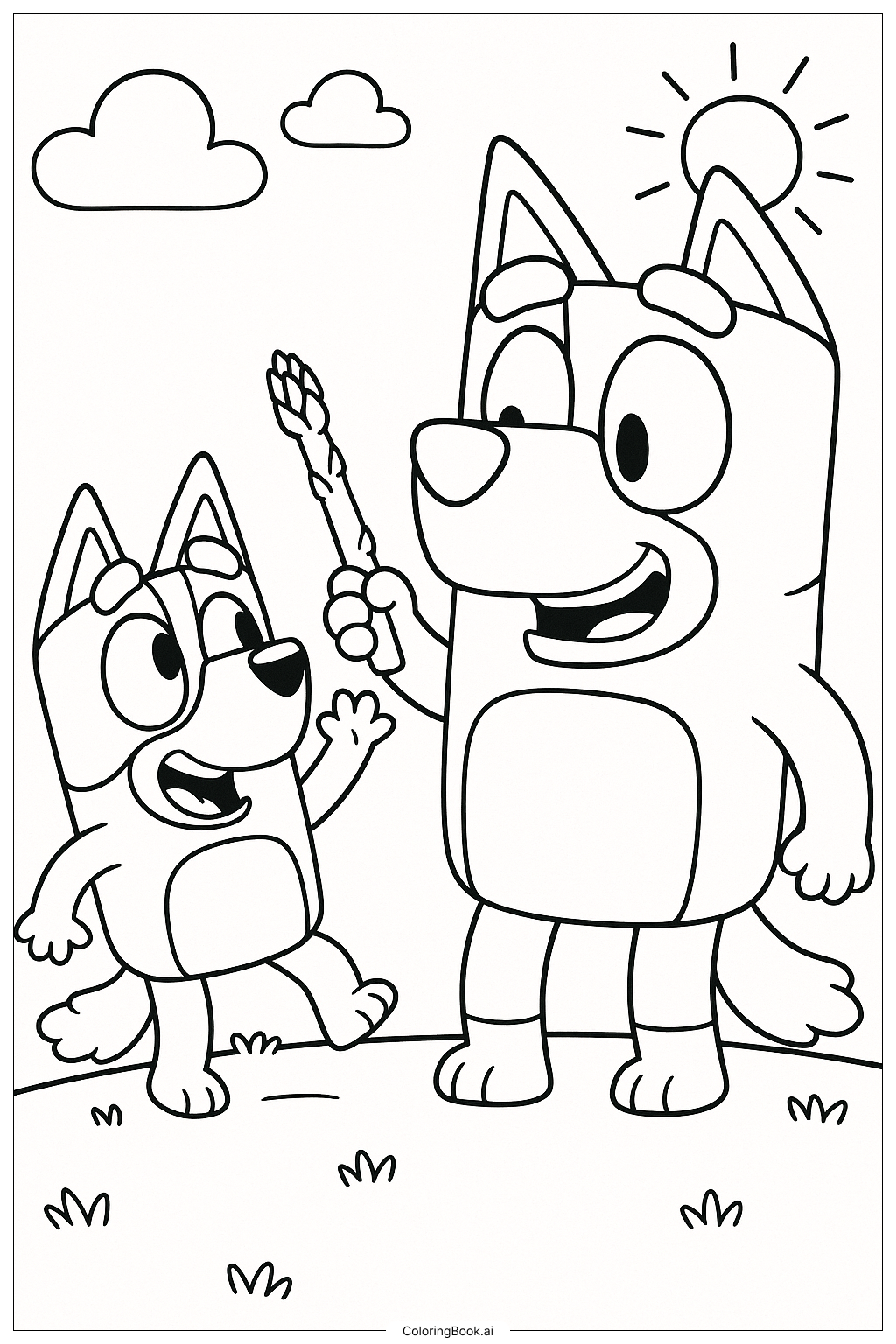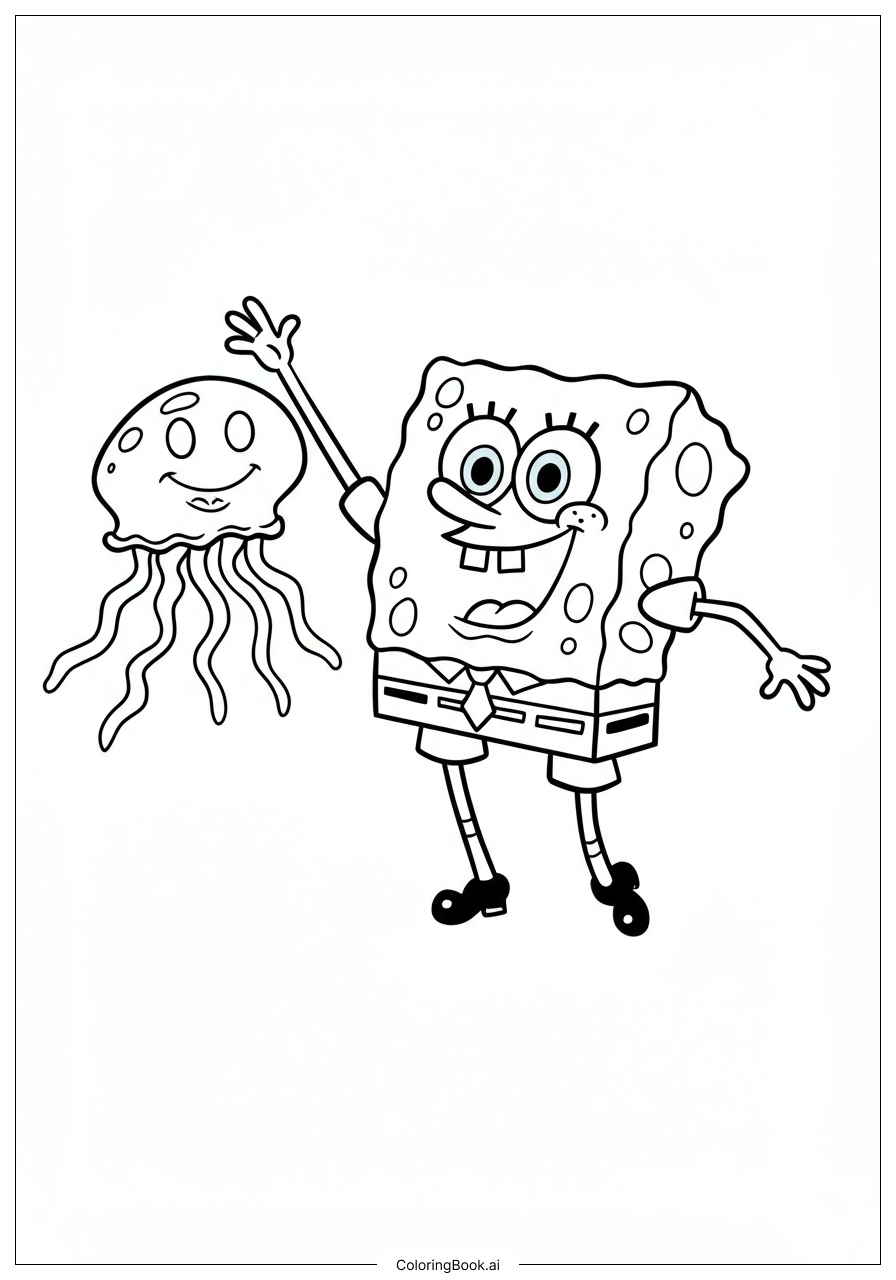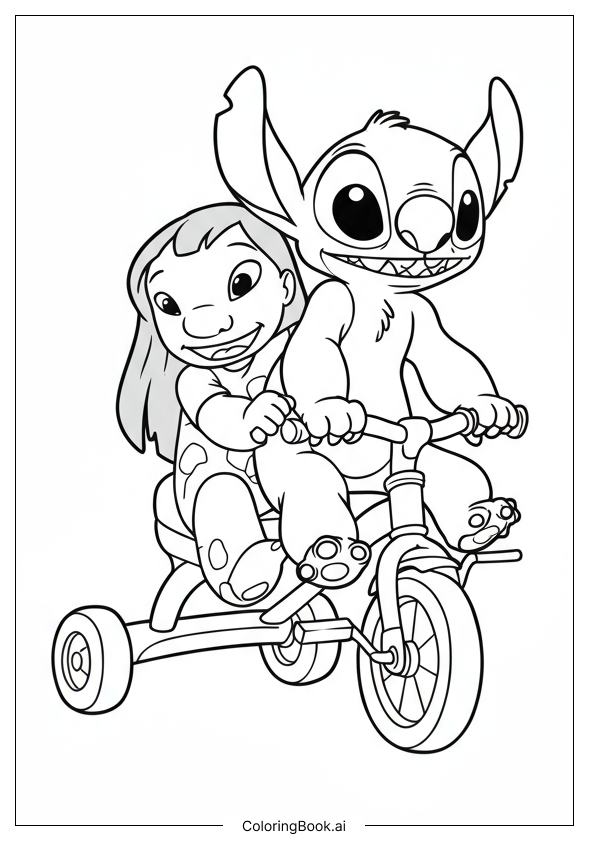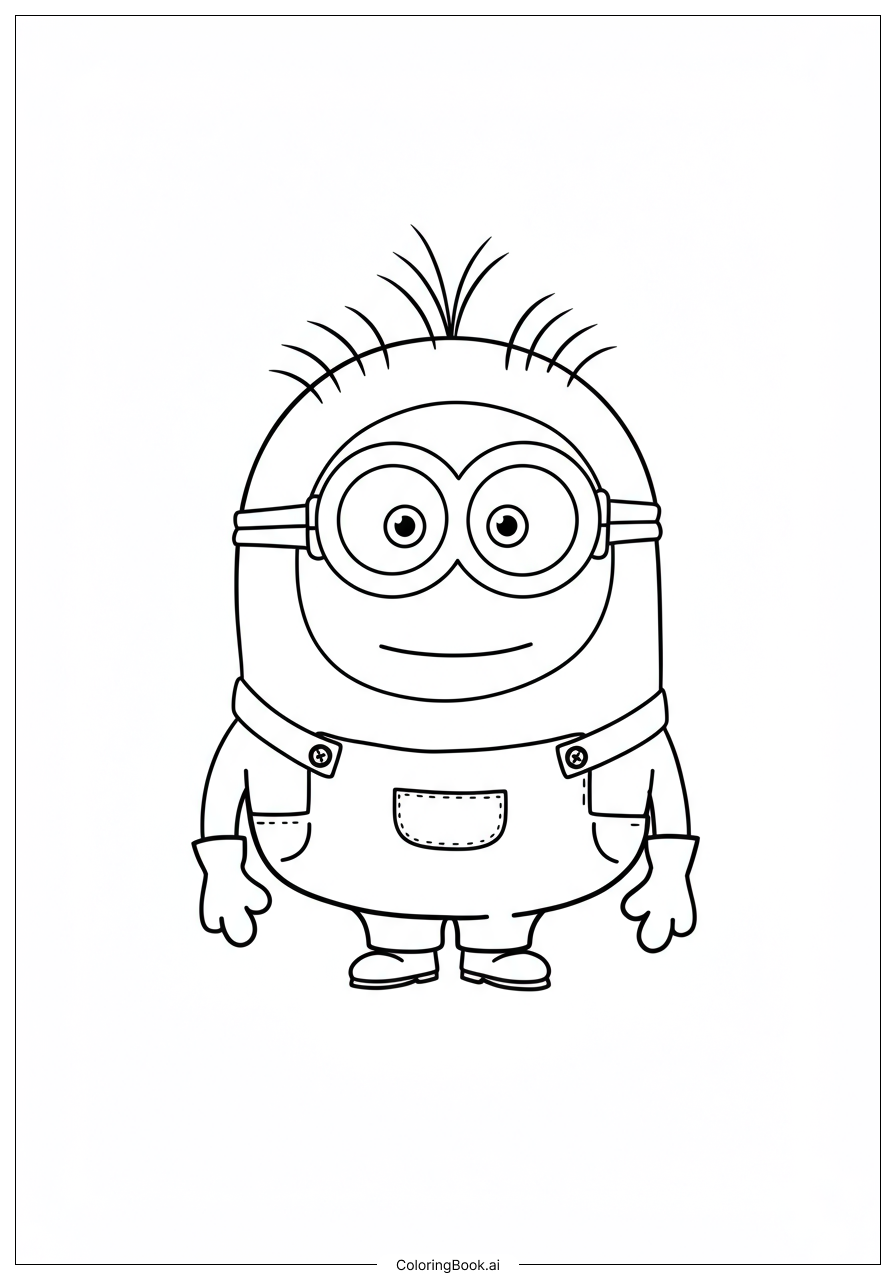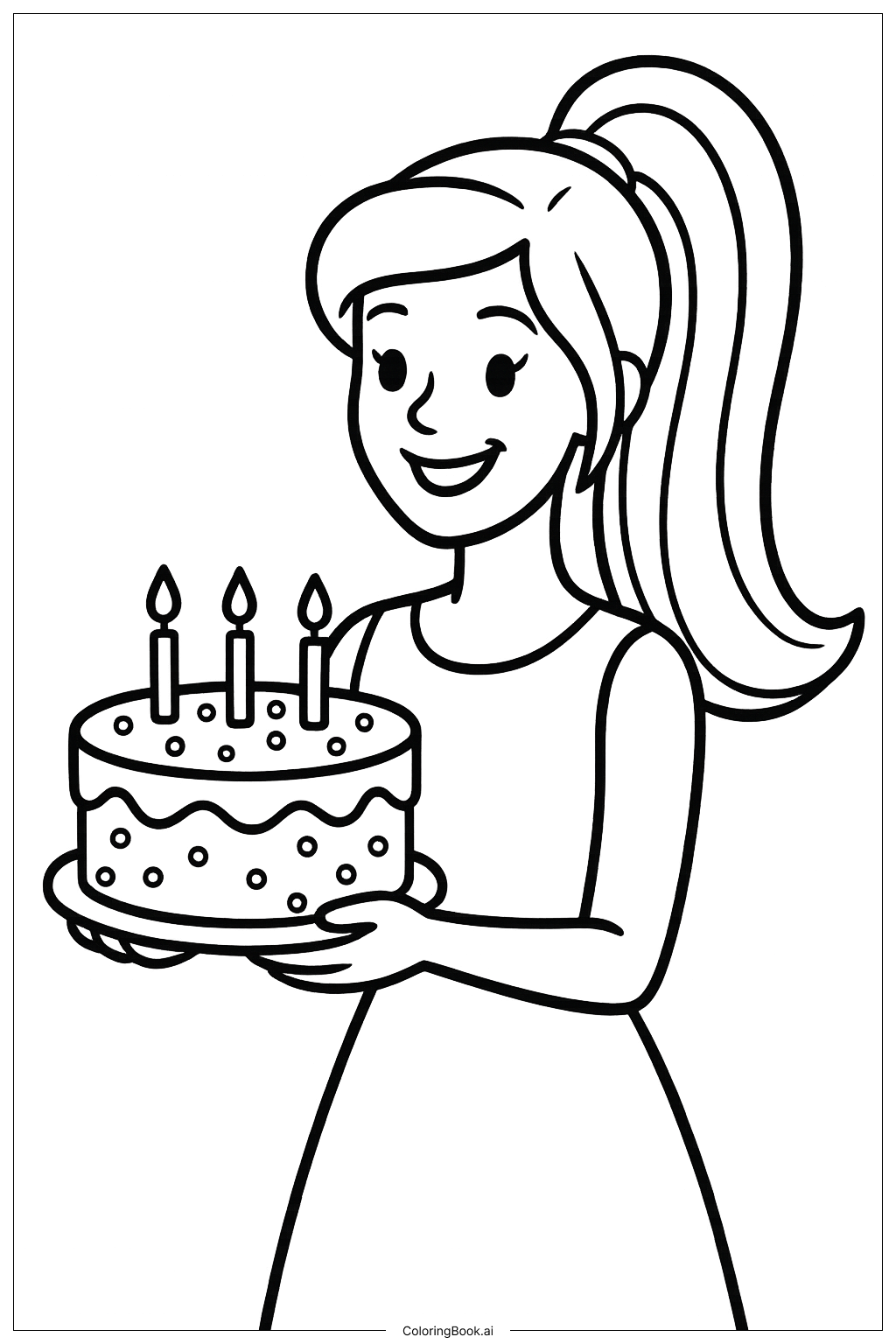Coloring tips: How to color Bluey Chasing A Butterfly coloring page well?
To color this picture, use different shades of blue for Bluey’s fur, as he is a blue heeler dog. Light blue can be used for the main body, with darker blue for the ears, eyebrows, and tail tips. For the belly and snout, use a soft cream or pale yellow. The eyes should have black pupils with white around, and the mouth can be colored red or pink inside. The butterfly can be bright with colors like yellow, orange, or purple to make it stand out. Use green or light brown for the ground or shadow area. Color carefully inside the lines to keep the picture neat and beautiful.
Coloring challenges: Which parts are difficult to color and need attention for Bluey Chasing A Butterfly coloring page?
1. Small Areas: Coloring the eyebrows, the small paws, and the butterfly’s antennae can be tricky because these areas are quite small and need careful coloring.
2. Clean Edges: Keeping the color inside the lines, especially around Bluey’s ears and paws, requires focus and control.
3. Layering Colors: Using lighter and darker shades to create a sense of depth in Bluey’s fur can be challenging for beginners.
4. Color Choices: Picking the right colors to match Bluey’s natural look while making the butterfly vivid might be confusing.
5. Shadow Coloring: Coloring the shadow under Bluey to look natural without spoiling the ground is also a bit difficult.
Benefits of coloring books: Advantages of drawing Bluey Chasing A Butterfly coloring page
Coloring this picture helps children improve their hand-eye coordination and fine motor skills by staying inside the lines and working with small spaces. It also encourages creativity as kids choose different colors for Bluey and the butterfly. This activity can improve focus and patience while adding fun by bringing the joyful scene to life. Moreover, coloring familiar characters like Bluey makes the experience more engaging and helps children connect with the story and emotions in the picture.
